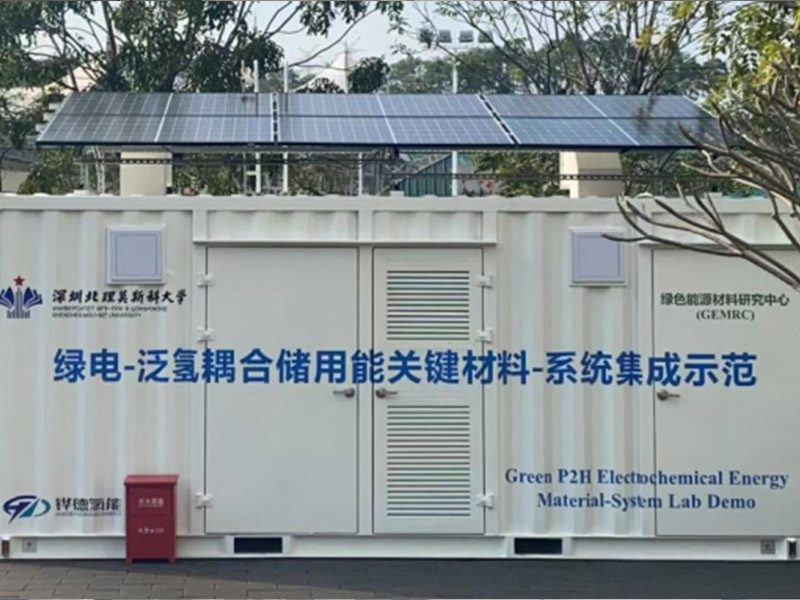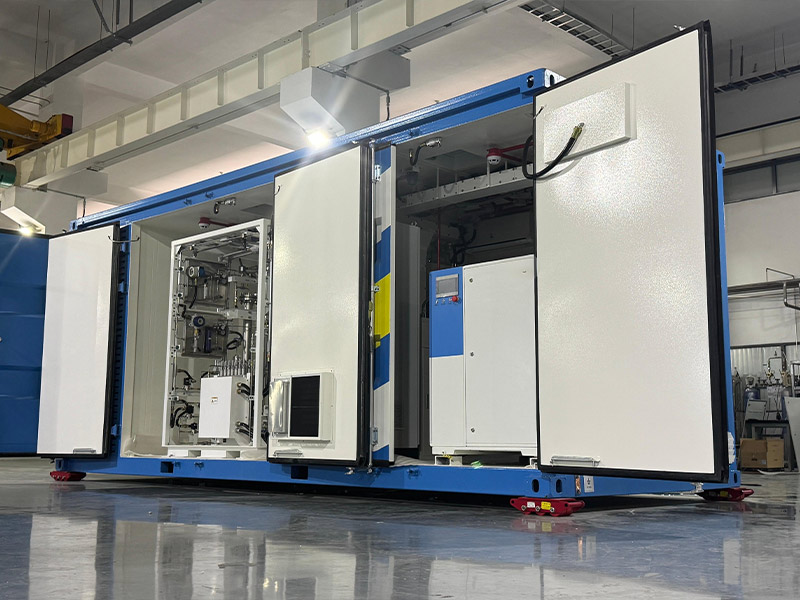As the world transitions to cleaner energy systems, combining solar energy with hydrogen production is emerging as a powerful and sustainable solution. Solar-powered hydrogen—produced via water electrolysis using electricity from solar panels—offers a carbon-free alternative to fossil fuels for residential, industrial, and transportation applications. However, to make this system efficient and cost-effective, it's essential to optimize how solar panels are used to generate hydrogen.
In this article, we'll explore practical strategies and technologies to maximize hydrogen energy production with solar panels, helping you get the most out of your renewable energy system.

Keypoints
l Monocrystalline or bifacial solar panels with optimal positioning and regular cleaning maximize electricity generation for hydrogen production.
l Properly sizing both solar arrays and electrolyzers ensures efficient hydrogen output without energy waste from mismatched capacity.
l Scheduling electrolyzer operation during peak sunlight hours and integrating battery/hydrogen storage enables 24/7 renewable energy availability.
l Selecting the right electrolyzer technology (PEM, alkaline) that aligns with your solar system's power output significantly improves conversion efficiency.
l Continuous performance monitoring allows for system scaling and diversification of hydrogen applications like heating and transportation.
Before diving into optimization strategies, it's important to understand the process of hydrogen production using solar energy.
Solar Panels capture sunlight and convert it into electricity (DC power).
This electricity is used to power an electrolyzer, which splits water (H₂O) into hydrogen (H₂) and oxygen (O₂) through electrolysis.
The resulting green hydrogen is stored in tanks and later used in fuel cells or burners to provide electricity or heat.
Because solar power is intermittent (available only during the day and dependent on weather), maximizing hydrogen production involves efficient system design, smart energy management, and the right equipment.
The first step to increasing hydrogen energy production is to ensure that your solar system is optimized for maximum power generation.
Use monocrystalline panels: they are more efficient than polycrystalline or thin-film panels and generate more power per square meter.
Consider using bifacial panels: they can absorb sunlight from both sides, increasing energy output by up to 20%.
Optimize panel position: Make sure your panels face the direct sun, ideally towards the south (northern hemisphere) or north (southern hemisphere), and maintain an appropriate tilt angle.
Avoid shading: Even partial shading can significantly reduce solar output. Trim trees or remove obstacles to ensure continuous sunlight.
More electricity = more hydrogen. It's that simple.
Calculate your hydrogen energy production goals first, then size your solar array accordingly. Typically 1 kilowatt of solar panels will produce about 0.02-0.03 kilograms of hydrogen per day, and industrial systems may require acres of solar panels to produce meaningful amounts of hydrogen.
Tilt angle: match your latitude for year-round production
Regular Cleaning: Dirty panels can lose 15-25% of their efficiency
Avoid shading: even partial shading can significantly reduce output
New technologies allow solar panels to connect directly to electrolyzers without DC-AC conversion, improving overall system efficiency by 5-10%.
Timing is crucial. Hydrogen production should primarily happen when solar energy is most abundant—typically between 10 a.m. and 4 p.m.
Use Timers or Schedulers: Set your electrolyzer to operate during peak solar hours to avoid drawing power from the grid.
Monitor Seasonal Trends: Maximize production during sunny months and store hydrogen for use during winter or cloudy seasons.
This approach ensures your system uses the cleanest and cheapest power available—your own solar electricity.
Maximizing hydrogen energy production also means knowing when to produce hydrogen and when to store electricity for later use.
Two Key Storage Options: Hydrogen Tanks.
Hydrogen Tanks
Store hydrogen gas for use at night, during cloudy weather, or in off-grid applications.
Battery Storage
Temporarily store excess solar energy and use it to power the electrolyzer during peak demand or low production times.
Hybrid systems using both batteries and hydrogen can help you maintain a 24/7 clean energy supply and reduce reliance on the electrical grid.
The electrolyzer is the heart of hydrogen production. It must be properly sized to align with your solar system’s capacity.
Too Small: The electrolyzer won’t use all available electricity, wasting potential hydrogen.
Too Large: It will be underutilized, leading to inefficient operation and higher costs.
For example, if your solar array produces an average of 5 kW, choose an electrolyzer that operates efficiently in the 4–5 kW range.
l PEM (Proton Exchange Membrane): Compact and responsive; ideal for dynamic solar input.
l Alkaline Electrolyzers: Cost-effective and well-established; better for steady, large-scale production.
l Solid Oxide Electrolyzers: High efficiency, but still in early-stage adoption.
Inefficiencies in wiring, inverters, and equipment can lead to power losses, reducing the amount of electricity available for hydrogen production.
Best Practices:
Use Quality Cables and Components: Poor wiring leads to energy losses and overheating.
Regular Maintenance: Clean your panels and inspect inverters, connectors, and the electrolyzer regularly.
Optimize Inverter Efficiency: Choose a solar inverter with a high conversion efficiency (above 95%).
Once your system is up and running, continue to track performance and scale accordingly.
Use Data to Improve: Monitor how much hydrogen you produce daily, monthly, and yearly. Look for patterns.
Add Panels or Electrolyzers: If you’re consistently producing surplus electricity, consider expanding your hydrogen production capacity.
Explore Use Cases: Use hydrogen not just for electricity, but also for heating, cooking, or even fueling a hydrogen vehicle.
Solar-powered hydrogen is a key piece of the clean energy puzzle. By optimizing your solar panel setup, choosing the right electrolyzer, and implementing smart energy strategies, you can maximize hydrogen energy production efficiently and sustainably.
Whether you’re powering a home, a business, or a remote facility, mastering the synergy between solar and hydrogen puts you at the forefront of a renewable energy revolution.
Yes, you can produce hydrogen at home by installing solar panels and connecting them to a water electrolyzer. This system generates green hydrogen when solar electricity is used to split water molecules into hydrogen and oxygen.
This depends on the size and efficiency of your solar system and electrolyzer. For example, a 5 kW solar panel array with good sunlight exposure can generate enough electricity to produce approximately 1 kilogram of hydrogen per day under optimal conditions.
While the initial setup costs can be high, long-term savings, energy independence, and reduced carbon emissions make it an attractive solution. Costs are also expected to drop as technology advances and adoption increases.
PEM (Proton Exchange Membrane) electrolyzers are typically considered the best for solar-powered systems due to their quick response to fluctuating solar input and compact design.
Yes, hydrogen can be stored safely in certified storage tanks designed to handle high pressures. Modern systems also include safety mechanisms like leak detectors and automatic shut-off valves to ensure safe storage and usage.
During periods of low solar production, you can use stored hydrogen or integrate battery backup systems to ensure a continuous energy supply. Smart energy management systems help coordinate usage and storage efficiently.
Absolutely. Hydrogen can also be used for heating, cooking, and even as fuel for hydrogen vehicles. Combined Heat and Power (CHP) systems allow you to utilize both electricity and heat from hydrogen fuel cells.
Many countries now offer incentives, rebates, or grants for installing renewable energy systems, including solar and hydrogen infrastructure. It’s best to check local programs or national clean energy initiatives.


